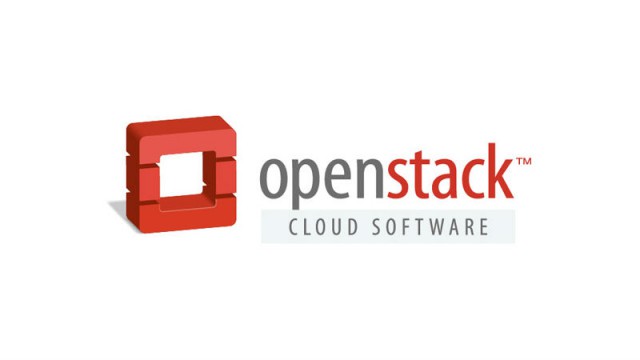What you need to know about OpenStack

Despite being launched more than five years ago and being supported by high-profile businesses of the likes of IBM, Intel, Yahoo, CERN, Disney, and hundreds of others, OpenStack is not particularly well known in business circles. This is largely because OpenStack is a cloud operating system that works behind the scenes delivering the infrastructure that organizations need to work effectively.
Speed and simplicity are its two main attributes, and since launching the OpenStack project has created thousands of jobs and benefitted countless organizations. With cloud computing continuing to grow in popularity all over the world, it’s vitally important that businesses have a strong understanding of what OpenStack can deliver.
What Is OpenStack?
As mentioned above, OpenStack is an open source cloud operating system. Founded by Rackspace and NASA in 2010, the primary aim of the project is to enable companies of any size to develop and offer cloud resources utilizing standardized hardware. In particular, OpenStack wants the cloud market to move away from proprietary platforms and embrace more innovative and accessible approaches to the cloud.
The OpenStack software largely focuses on infrastructure-as-a-service, delivering a number of different components, such as compute resources (codenamed Nova), networking (Neutron) and storage (Swift or Cinder). One of the easiest ways for businesses to understand the practical benefits of OpenStack is to consider how organizations worked prior to its existence.
Previously, businesses would employ dedicated servers to create and run applications, which eventually led to the buildup of many servers, the majority of which were underused. With virtualization, part of this problem was resolved but once again, the use of more and more virtualized servers and hypervisors caused configuration and integration issues.
OpenStack looks to simplify the virtualization layer by displaying all of the interrelated components as pools of resources. It doesn’t matter if the underlying hardware or hypervisors consist of different brands, they are all accessed via the OpenStack extraction layer, with services grouped into compute, networking and storage.
This mean that OpenStack users receive a uniform experience regardless of the underlying IT resources. Rather than worrying about the integration between your Hyper-V and VMWare hypervisors for example, businesses simply access the OpenStack dashboard to gain the management and administrative features that they need.
Its ease of use and flexibility has seen OpenStack embraced by a number of different businesses operating across a wide range of industries. Organizations working in IT, e-commerce, academic research, healthcare, the media, finance and many other sectors are currently making use of the platform.
Amongst many use cases, PayPal have begun using OpenStack to deliver their own private cloud, ensuring that its developers can respond to the needs of their customers with speed and stability. Because PayPal must facilitate the transfer of $4,400 every minute it needs cloud infrastructure that is scalable and matches its 99.9999 percent availability requirement.
Saran Mandair, senior director of PayPal infrastructure engineering, believes that OpenStack combines that agility and availability that his company needs. "We want to deliver the future of money today. What that means is we want to enable our customers to make payments any time and any way", Mandair says. "We are moving to the cloud powered by OpenStack to enable agility, availability and the innovation necessary to get the best products to our customers, faster than our competitors".
Embracing the Open Source Community
Like many other open source projects, the community supporting OpenStack is as important as its software. As referenced by the OpenStack website, the project consists of "a global collaboration of developers and cloud computing technologists producing the open standard cloud computing platform for both public and private clouds".
The open source community behind OpenStack is made up of 34,538 individuals and 559 supporting companies, working across 177 countries and producing in excess of 20 million lines of code so far. The community is not only responsible for driving innovation, but also supporting growth.
Online training programs are provided and regular updates are supplied as part of OpenStack’s six-month release cycle. The efforts of individual developers and supporting companies ensure that the OpenStack project continues to develop and evolve to match the needs of its users.
Similarly, the OpenStack Foundation also helps to promote the development and distribution of the platform. By supplying a wide range of shared resources, the foundation supports companies that are looking to adopt the cloud platform. In addition, through its technical committee, board of directors and user committee, the OpenStack Foundation helps shape the future of the technology. Like the software itself, individual membership to the foundation is free, helping to ensure that OpenStack remains as inclusive as possible.
Speed, Simplicity… Security?
Although the popularity of OpenStack continues to grow, the technology has faced some security concerns. Because OpenStack’s code is relatively new, it can contain vulnerabilities that are yet to be discovered by the community. Fortunately, the OpenStack Security Project ensures that any potential threats are taken extremely seriously.
A security guide also advises users on best practice, but just because OpenStack is a cloud platform, businesses should still employ the usual security protocols. Firewalls, anti-malware software and regular system auditing will all help to ensure that your OpenStack deployment doesn’t contribute business vulnerabilities.
For organizations looking to embrace cloud computing without getting tied down by proprietary contracts, the open source software offered by OpenStack could be the perfect fit. The software has already proven popular for a huge number of businesses and, after being available for nearly six years, the platform has now had time to mature.
Aside from the software, businesses of all sizes can benefit from the OpenStack community that helps to develop, promote and improve not only its own IT solutions, but also the larger cloud computing market.
Published under license from ITProPortal.com, a Future plc Publication. All rights reserved.
